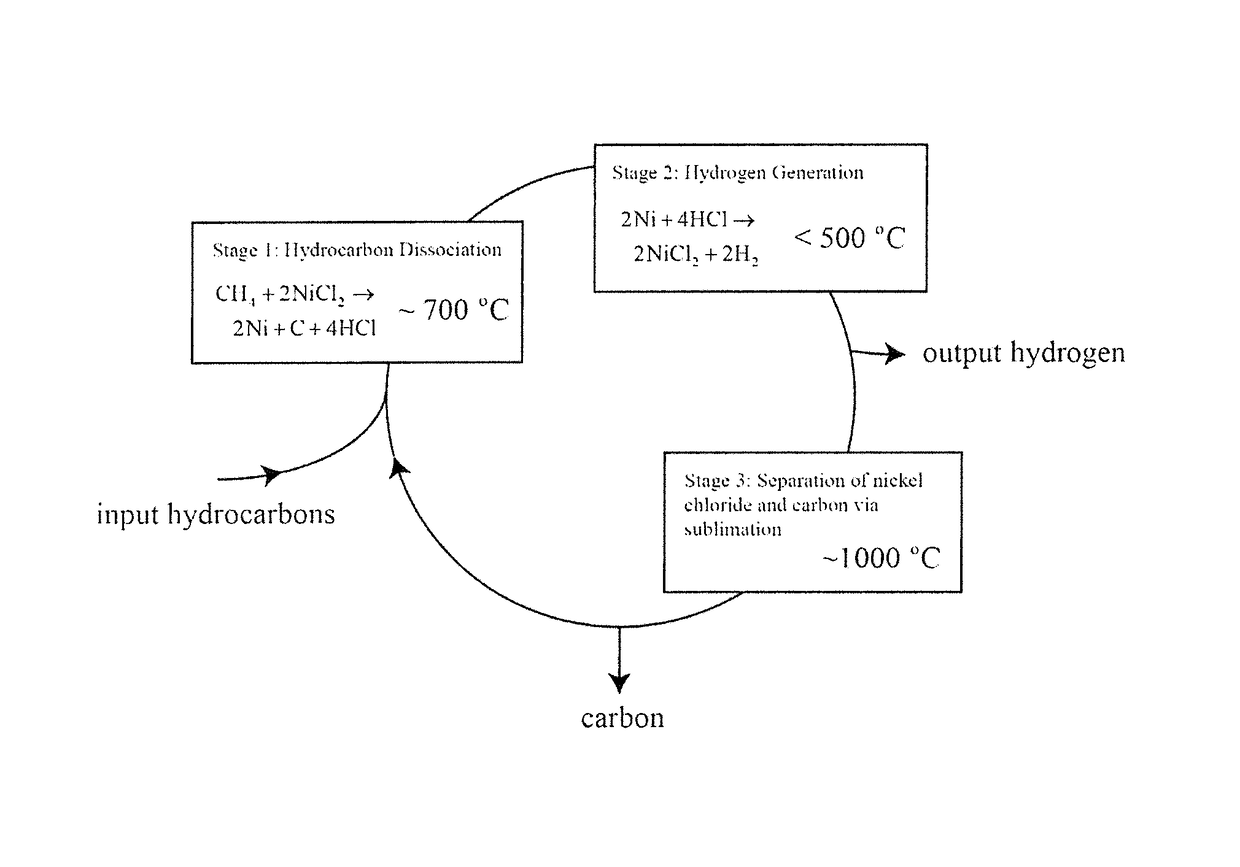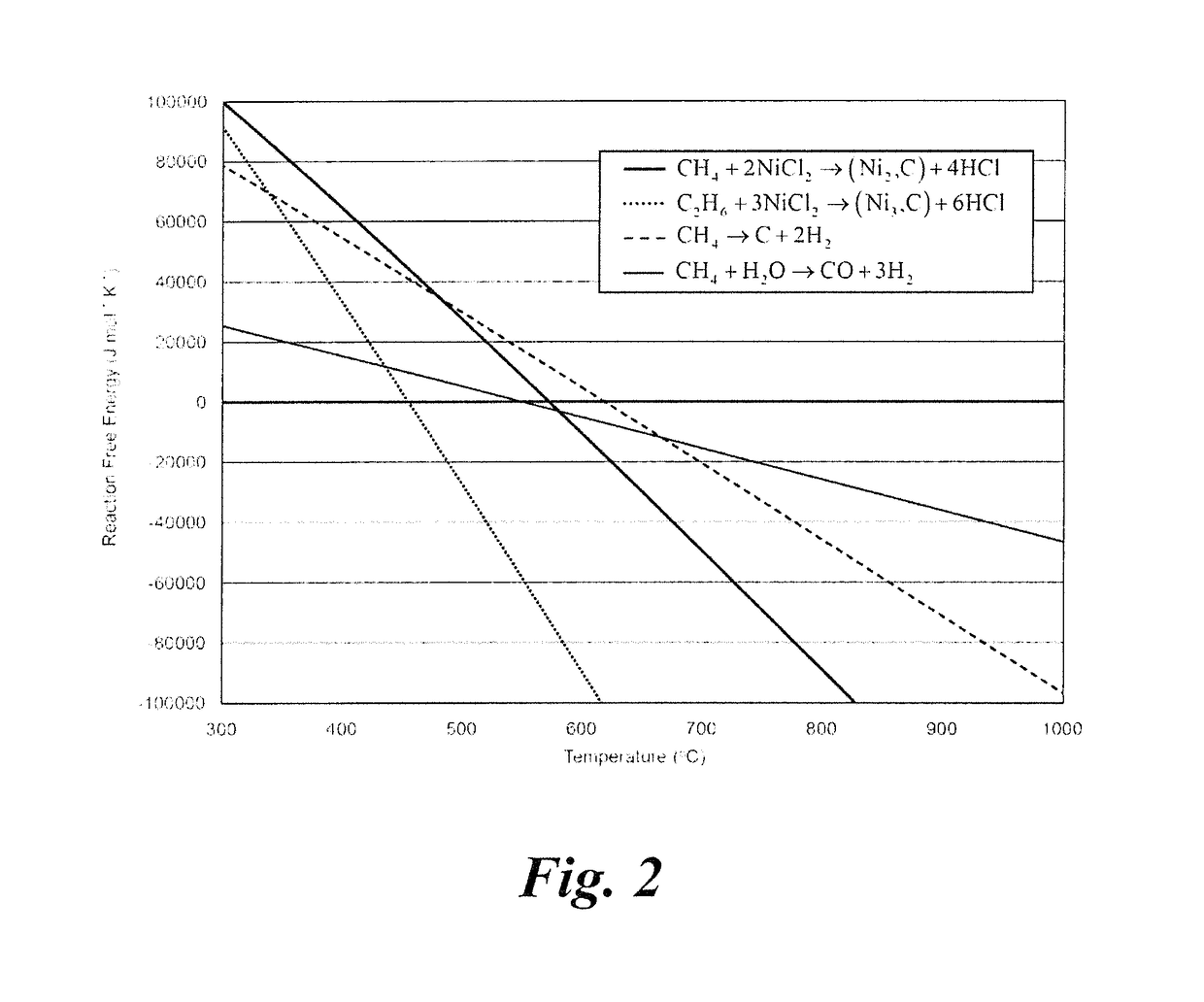Method of carbon dioxide-free hydrogen production from hydrocarbon decomposition over metal salts
a technology of hydrocarbon decomposition and hydrocarbon decomposition technology, which is applied in the direction of hydrogen production, hydrogen production, chemistry apparatus and processes, etc., can solve the problems of catalyst deactivation and difficult recovery for reus
- Summary
- Abstract
- Description
- Claims
- Application Information
AI Technical Summary
Benefits of technology
Problems solved by technology
Method used
Image
Examples
example 1
[0025]10 g of anhydrous NiCl2 was loaded into an alumina tube and placed in a tube furnace. A flow of 100% argon (Ar) gas was passed through the tube, and bubbled through a water beaker to create a non-oxygen containing atmosphere within the tube. A mass spectrometer connected to the gas stream between the tube and the bubbler sampled and measured the composition of the tube outlet stream. The sample in the tube furnace was heated to 700° C., and then the inlet stream composition was switched to 95% argon, 5% methane. Immediately, a hydrogen chloride signal was observed in the mass spectrometer, and the reaction was run until the hydrogen chloride signal dropped to zero. The gas inlet stream was then switched back to 100% Ar and the tube was cooled. It was found that the nickel chloride had been transformed to a black powder that elemental analysis confirmed was comprised of nickel and carbon. According to the chemical reactions described for each stage of the process, the reaction ...
PUM
| Property | Measurement | Unit |
|---|---|---|
| temperature | aaaaa | aaaaa |
| temperature | aaaaa | aaaaa |
| temperatures | aaaaa | aaaaa |
Abstract
Description
Claims
Application Information
 Login to View More
Login to View More - R&D
- Intellectual Property
- Life Sciences
- Materials
- Tech Scout
- Unparalleled Data Quality
- Higher Quality Content
- 60% Fewer Hallucinations
Browse by: Latest US Patents, China's latest patents, Technical Efficacy Thesaurus, Application Domain, Technology Topic, Popular Technical Reports.
© 2025 PatSnap. All rights reserved.Legal|Privacy policy|Modern Slavery Act Transparency Statement|Sitemap|About US| Contact US: help@patsnap.com



